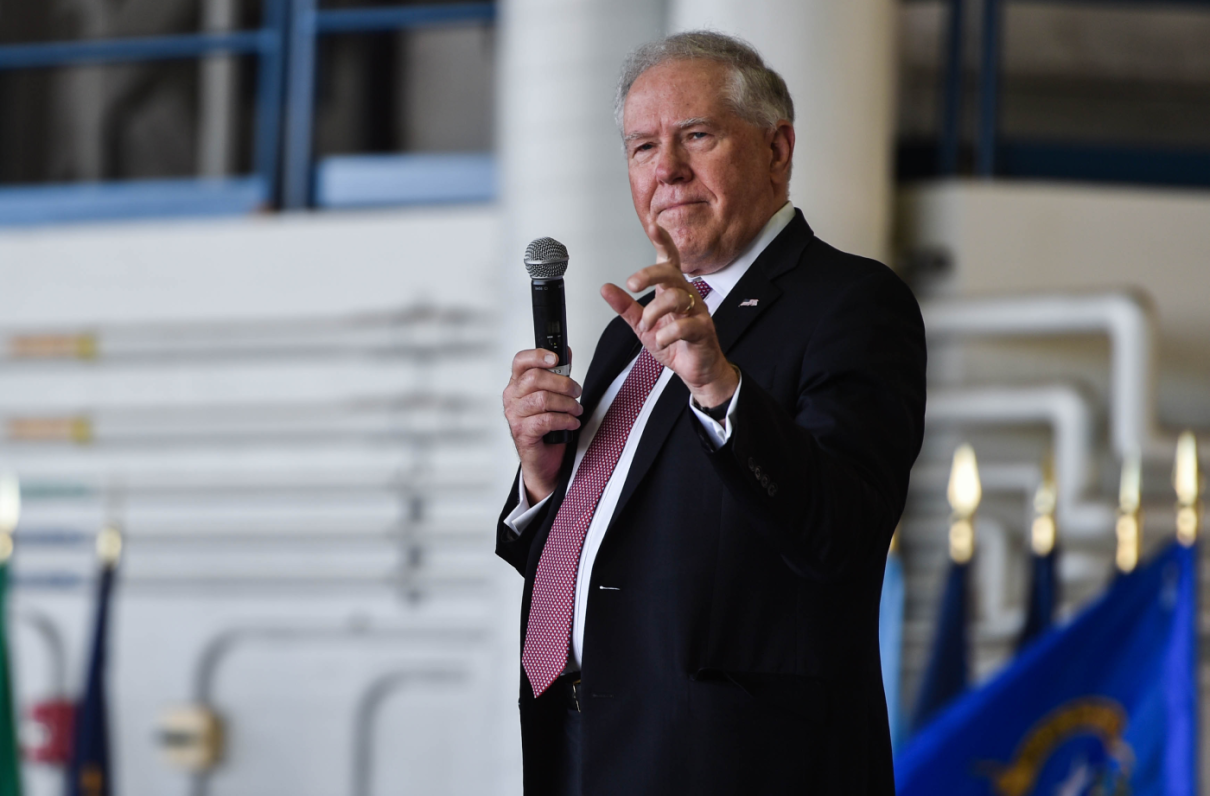(This article originally appeared in the September 2022 issue of Military Officer, a magazine available to all MOAA Premium and Life members. Learn more about the magazine here; learn more about joining MOAA here.)
Growing up, Frank Kendall realized he did not have the eyesight required to become a military pilot. So the nearsighted lover of model airplanes went to the U.S. Military Academy at West Point, never imagining that five decades later he would serve as the 26th Secretary of the Air Force.
“I do pinch myself occasionally about that, but I am delighted, happy, and thrilled to be here,” said Kendall during a May interview with Military Officer.
After serving 11 years as an Army officer, Kendall held positions in government, private industry, and the military, with decades of experience in engineering, management, defense acquisition, and national security affairs.
Kendall shared his vision of the Air Force and Space Force, what makes a good leader, and how his time in uniform helped prepare him for his current role. This interview has been edited for length and clarity.
[MOAA INTERVIEW: Gen. Charles Q. Brown Jr., Air Force Chief of Staff]
Q. What nation is the biggest threat to U.S. air and space superiority, and why?
A. China, and by a wide margin. … I have been watching China’s militarization program since 2010. They were not a threat of this caliber when I left government in 1994. When I came back 15 years later and I saw what they were building, I realized immediately that their intent was to build forces that could beat the United States, at least in their part of the world. … They have continued down that path. They are thinking ahead. They are not just designing for what we have today, they are designing for what they foresee us to have tomorrow.
We are back in what I experienced in the Cold War — a strategic competition with a well-resourced, strategic, thoughtful adversary who is investing in the means to defeat us. We have to get up every day and understand that and act in response to it.
Q. You’ve said the Air Force is stretched thin, globally. Where is it stretched the most, and how are you working to correct it?
A. I am not sure I can point to any one place, just that our assets overall are in demand everywhere. Every combatant commander wants more — they always do; they have good reason for that. But we don’t have more in all cases. ... We do need some strategic discipline; we do need to think about where the greatest problems are and where the risks are going to be greatest in the future, so that we allocate resources consistently to that.
[RELATED: Service Academy Applications Plummet Amid Recruitment and Pandemic Woes]
Q. What role does the Space Force play in the Air Force?
A. In space, there are two fundamental missions. One is defensive, one is offensive. Space provides a number of critical services [like] communication services; missile warning services; position, navigation, and timing. And together with the intelligence community, [it provides] space-based surveillance and targeting of terrestrial things, both air and surface targets we might want to engage.
The other critical mission of the Space Force is to protect the joint force from observation and space-based capabilities an adversary might have. China has invested very heavily in space-based capabilities.
Q. Given what is happening in Ukraine, how do we better protect our forward Air Force bases?
A. Protecting our Air Force bases is one of my seven operational imperatives. The threat to our Air Force bases is significant. Precision munition introduced decades ago makes it much more pragmatic for someone to attack forward Air Force bases and makes it much harder to defend them.
We need to look at a mix of things: hardening of our Air Force bases, dispersion, use of alternative locations as a hub-and-spoke concept, if you will. Defenses, deception, a whole range of things designed to make our bases much more resilient and make it harder to target our forces. We also have to look at what our long-range capabilities [are] and ensure we have a good balance of short-term capabilities and global strike capabilities.
[RELATED: Meet the Guardsman Helping Ukrainians Blow Up Russian Tanks Over the Phone]
Q. How would you describe your leadership style?
A. There are times where you have to be much firmer and direct to get a critical mission done, and there are times, for a variety of reasons, where you want to be more collaborative. The service’s secretary role is really unique. … My mantra here has been one team, one fight. At the end of the day, I make the decision about certain things, and in some cases, I will defer to the chiefs. I always listen to them and take their views into account.
Q. Does your Army background help in your current role as the top civilian leader of the Air Force?
A. Absolutely. I think taking on one of these jobs without some experience with the military is very difficult. Serving in uniform in any of the services … helps you understand military cultures. The chains of command, the types of issues people have to deal with every day.
Even though it’s been a long time since I was on active duty, I stayed in the reserves until I was older, so I kept my contact [with the military]. In my civil service positions, I was very involved with the military. … I don’t think there is any substitute for actually wearing a uniform and what that teaches you about leadership. And that carries over pretty well between the services.
Q. What are your thoughts on the Air Force turning 75?
A. We are looking forward to it. We have had some interesting events already that point to our history and where we are. ... When you think about the history and how far we’ve come since 1947, it’s really quite impressive. …
We are back into a world strategically where I think the importance of the Air Force and Space Force couldn’t be higher. We have to be very strategic and thoughtful on how we invest for the future.
Support MOAA Charities
Your generosity will benefit the work of The MOAA Foundation and MOAA Scholarship Fund. Click for details.

